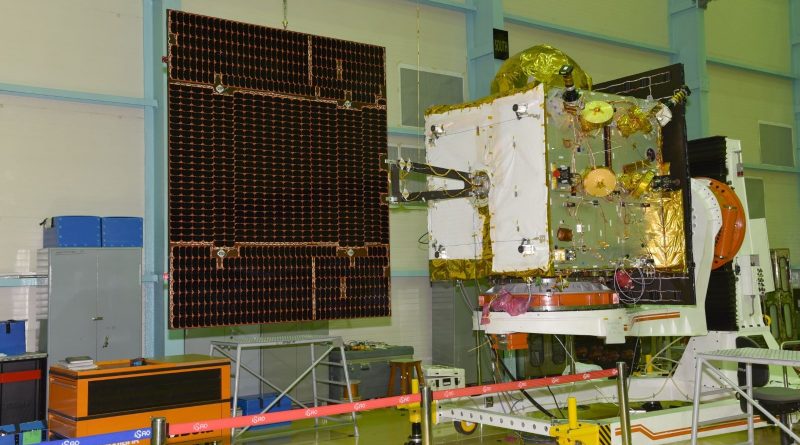India’s PSLV set for IRNSS Navigation Satellite Replacement Launch to Mitigate Clock Issues
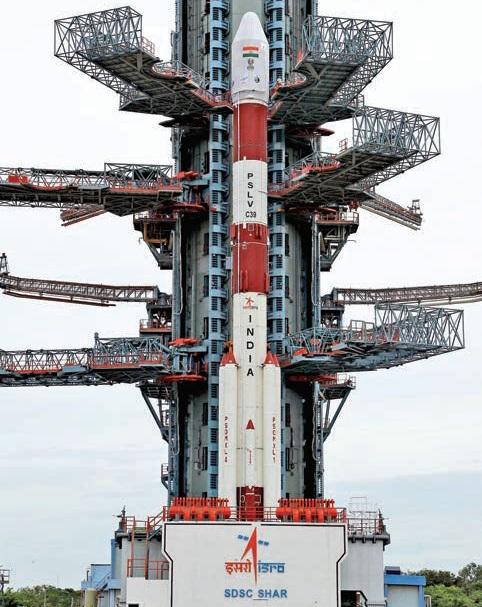
The Indian Space Research Organization is counting down to the launch of a Polar Satellite Launch Vehicle on Thursday with a revamped IRNSS navigation satellite set to provide critical replacement capacity to begin dealing with a systemic clock issue that is affecting India’s first IRNSS generation.
Liftoff from the Satish Dhawan Space Center is planned at 13:30 UTC and the four-stage PSLV will be in action for 19.5 minutes to deliver the IRNSS-1H satellite into a sub-GTO orbit from where it will maneuver up into an inclined Geosynchronous Orbit to replace the constellation’s first satellite that has lost all its onboard clocks due to short circuits.
The Indian Regional Navigation Satellite System (IRNSS) was inaugurated in July 2013 when its first satellite was sent into orbit to begin establishing a seven-satellite constellation in Geostationary and inclined Geosynchronous Orbits to deliver coverage to the Indian Subcontinent and surrounding regions. Independent access to navigation was seen as a priority to eliminate India’s reliance on outside systems such as GPS that may not be available in times of distress.
With initial concepts drawn up in 2006, IRNSS was designed to be multi-level redundant: on the individual satellite level, each member of the constellation carries three atomic timekeepers in a two-redundant architecture and the constellation level was laid out to operate seven satellites at any time, allowing one to fail without affecting the operation of the system. Additionally, two spare satellites were built to remain in a flight-ready configuration to be available for launch on short notice.
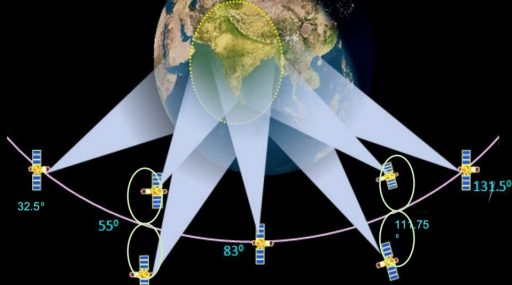
IRNSS reached its initial operational capability in early 2016 with five satellites in operation and the final two followed by July of last year, allowing IRNSS to head into its fully operational phase. However, beginning in mid-2016, IRNSS-1A – the oldest of the constellation – experienced failures of its onboard rubidium atomic clocks, eventually losing all three time keepers, putting the satellite into a severely degraded state as it could only output coarse signals that were not useful for precise navigation.
The IRNSS constellation uses the same rubidium atomic frequency standard clocks as the European Galileo positioning, navigation and timing system and China’s Beidou navigation architecture. Reports emerged in January that clocks on the Galileo constellation were failing at an alarming rate with both types of clocks on the satellites being affected – the robust rubidium clocks and the more precise Hydrogen Masers.
>>IRNSS Satellite & Constellation Overview
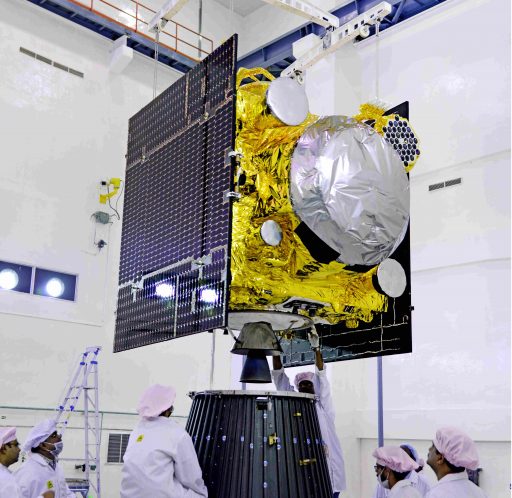
All clocks on Galileo, IRNSS and China’s Beidou-2 constellation were manufactured by Swiss company Spectratime, but the Beidou clocks were built before a defective component was introduced into the subsequent production series, sparing the Chinese from clock troubles on their constellation. The early Galileo In-Orbit Validation Satellites have also shown stable operation of their rubidium clocks which were built to the previous production specification.
An investigation into the problem isolated the in-orbit failures to a short circuit in an inexpensive electronics component used on the rubidium clocks while the problems on Galileo’s Hydrogen Masers were traced to a separate issue related to how the masers are switched on and off, implementing procedural changes to work around the problem.
A comparison between failure signatures showed the clocks on Galileo and IRNSS-1A failed in the exact same fashion, building further confidence in the fault tree analysis and repair procedure worked out for existing rubidium clocks. As a result, clocks already installed on Galileo satellites awaiting launch and IRNSS ground spares were removed and shipped back to undergo repairs and re-tests.
To extend the operational lives of the satellites already in orbit, ISRO changed the procedure of how the three clocks are run. Initially, two of the clocks were kept running with one in primary mode and one as a hot backup while the third was powered off. As a life extension measure, ISRO decided to have only one clock running and two powered off, only activating the backup clocks when the primary one encounters a problem.
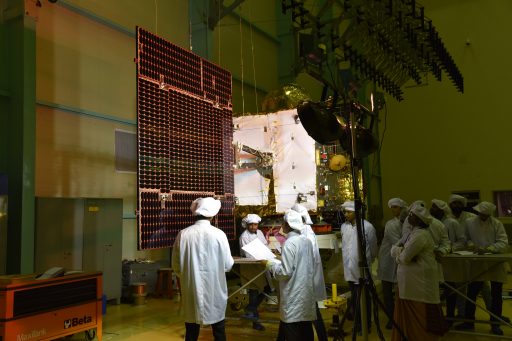
Reports emerged in June that up to four clocks in addition to those on IRNSS-1A have suffered problems, but ISRO did not confirm these press reports.
Work has already been underway within ISRO’s Satellite Applications Center to develop rubidium clocks for the next generation of IRNSS satellites set to take over from the first generation in the mid-2020s and ISRO also signed an agreement with Israel regarding cooperation in development of spaceborne atomic clocks, likely in an effort to implement clocks from two vendors on the next satellite generation to eliminate the risk of a single systemic issue causing a constellation-wide interruption.
The IRNSS-1H satellite is identical to the other first generation IRNSS satellites but implements repaired rubidium clocks featuring the same fix as those being currently integrated into a group of four Galileo satellites targeting liftoff in December. The IRNSS-1H satellite weighs 1,425 Kilograms and will be dispatched into a sub-GTO type orbit from where it will maneuver into the western IGSO plane of the IRNSS constellation where it will take over for the 1A satellite. ISRO is also expecting to launch the IRNSS-1I satellite before the year is out to place another operational spare into orbit to be able to quickly respond if another satellite loses all of its atomic clocks.
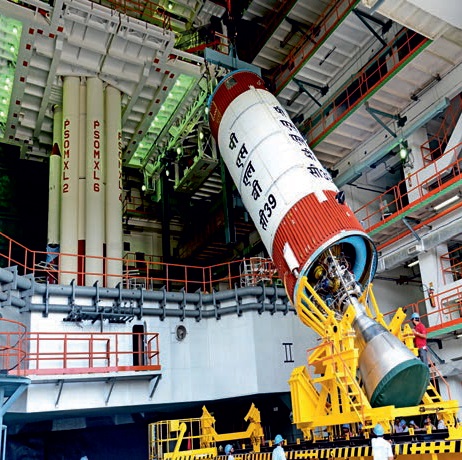
Thursday’s launch will be the 41st flight of India’s PSLV rocket that handled all seven previous IRNSS missions, leveraging the raw power of solid rocket motors in combination with the precision of liquid-fueled engines to accurately inject payloads into a variety of orbits.
When flying in its XL configuration, PSLV weighs in at 321 metric tons and employs a stack of four stages plus six strap-on solid rocket boosters. PSLV sports a 20.3-meter long first stage holding 138 metric tons of solid propellant with six extended Solid Rocket Boosters clustered around it, each holding another 13 tons of propellant to deliver the kick needed to send the vehicle on its way with a maximum thrust of over 800 metric-ton-force.
The 12.8-meter second stage is outfitted with a 799kN Vikas engine consuming 40,700kg of toxic hypergolic propellants while the third stage burns 6,700kg of solid fuel to accelerate the stack onto a sub-orbital arc. In charge of finishing the boost to orbit is the fourth stage, powered by a pair of low-thrust engines using a hypergolic propellant combination.
The PSLV rocket entered countdown operations on Wednesday, 29 hours prior to the planned liftoff time to undergo propellant loading operations to fill the fourth stage with two metric tons of propellants before proceeding with loading the second stage and the first stage’s roll control system. Standing tall atop the Second Launch Pad at Satish Dhawan, PSLV C39 will be put through a last round of tests before pressing into the final countdown phase that includes flight software load on the vehicle and a 12-minute automatic sequence to ready the vehicle for flight.
Launch Profile
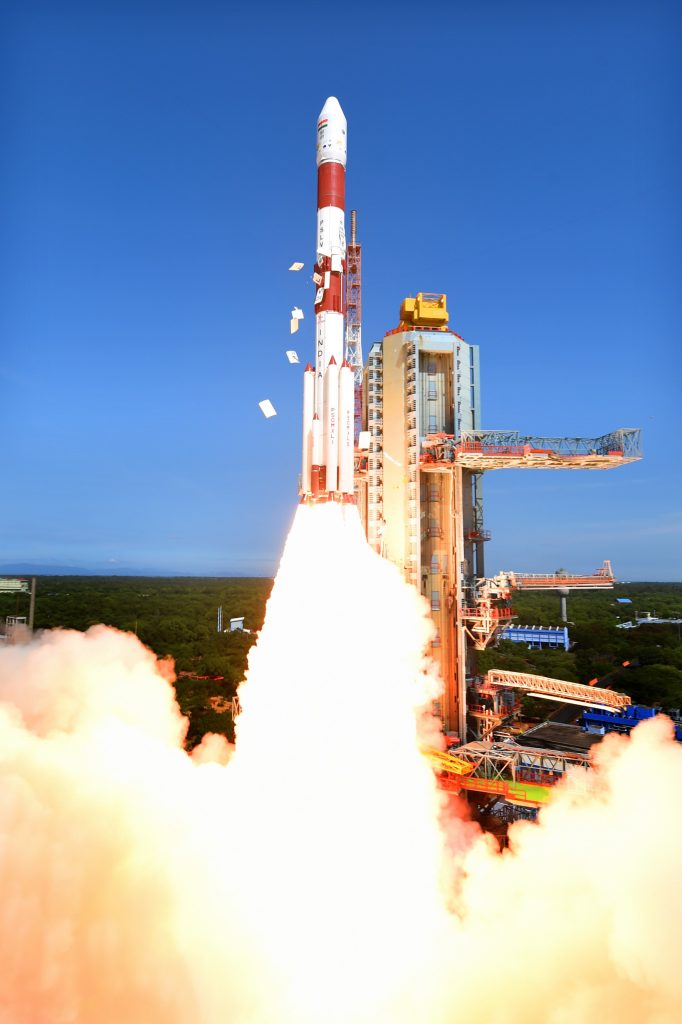
When clocks hit zero, the PS1 stage will fire its ignition system followed by ignition commands issued to two pairs of Solid Rocket Boosters at T+0.42 and T+0.62 seconds, creating a total thrust of 700,600 Kilogram-force. Jumping off its launch pad, the 44.4-meter tall PSLV will climb vertically for a short moment before pitching over to start flying south-east across the Indian Ocean, aligning itself with its planned ascent trajectory headed for a sub-GTO type orbit.
The remaining two Solid Rocket Boosters begin firing at T+25 seconds when PSLV will be 2.7 Kilometers in altitude, increasing the total thrust of the vehicle to 803 metric tons, further accelerating the launcher. Each of the boosters burns for 49.5 seconds, but to ensure a clean separation and off-shore impact, PSLV will hold the ground-lit boosters until T+1 minute and ten seconds when they will be separated in pairs, 0.2 seconds apart at an altitude of 24 Kilometers. The air-lit boosters will tail-off for separation one minute and 32 seconds into the flight.
The massive first stage will continue firing, delivering 496 metric tons of thrust as it burns through 138,000 Kilograms of solid propellant in just 105 seconds, lofting the vehicle to an altitude of 56 Kilometers and a speed of 2.4km/s. Separation of the first stage is expected one minute and 50 seconds into the flight with second stage ignition an instant later.
The Vikas 4 engine of the second stage will soar up to a thrust of 81,500 Kilogram-force for a burn of just over 2.5 minutes. Starting the second stage burn, the vehicle will transition from a pre-determined attitude profile flown during PS1 to Closed Loop Control to dynamically adjust its flight profile based on measured navigation data in order to meet its cutoff targets.
At T+3 minutes and 23 seconds, the vehicle will have reached an altitude of 115 Kilometers, making it safe to separate the protective payload fairing since aerodynamic forces no longer present a danger to the satellite at that altitude. The second stage will conclude its burn and separate at T+4:23, reaching an altitude of 135 Kilometers and a speed of 5.38km/s.
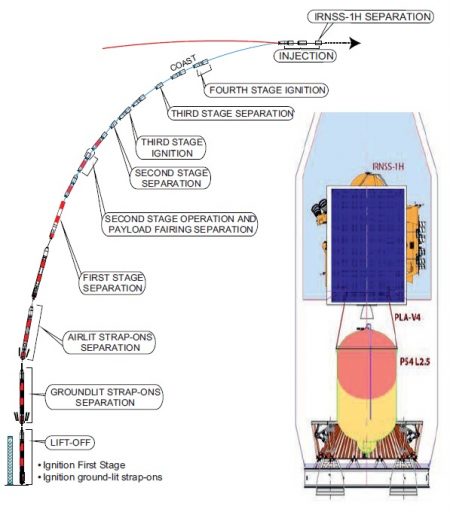
Third stage ignition occurs one second after staging, starting a burn of 113 seconds during which the stage will deliver 24,900 Kilogram-force of thrust. After burnout of the third stage, PSLV will keep holding onto the stage for the nominal Stage 3-4 coast phase that is designed to allow the stack to gain altitude ahead of the fourth stage burn. It also allows the third stage to tail off any residual thrust to ensure a safe separation. The coast lasts from T+6:17 to T+10:07, a period during which the stack climbs from 135 to 185 Kilometers.
Separation of the third stage is expected ten minutes and seven seconds into the flight followed ten seconds later by the ignition of the fourth stage’s L-2-5 engines on a burn of eight minutes and 32 seconds. IRNSS-1H is targeting an insertion orbit of 284 by 20,650 Kilometers at an inclination of 19.2 degrees.
IRNSS-1H will be separated from the PSLV at T+19 minutes and 25 seconds at an altitude of 507 Kilometers and an insertion speed of 9.6km/s.
Very shortly after separation, the satellite will deploy its two power-generating solar arrays, establish communications with ground stations and stabilize its three-axis orientation. Over a period of days, the spacecraft will complete four burns of its Liquid Apogee Motor to insert itself into a 29-degree inclined Geosynchronous Orbit at 55 degrees East longitude where it can take over from IRNSS-1A.

